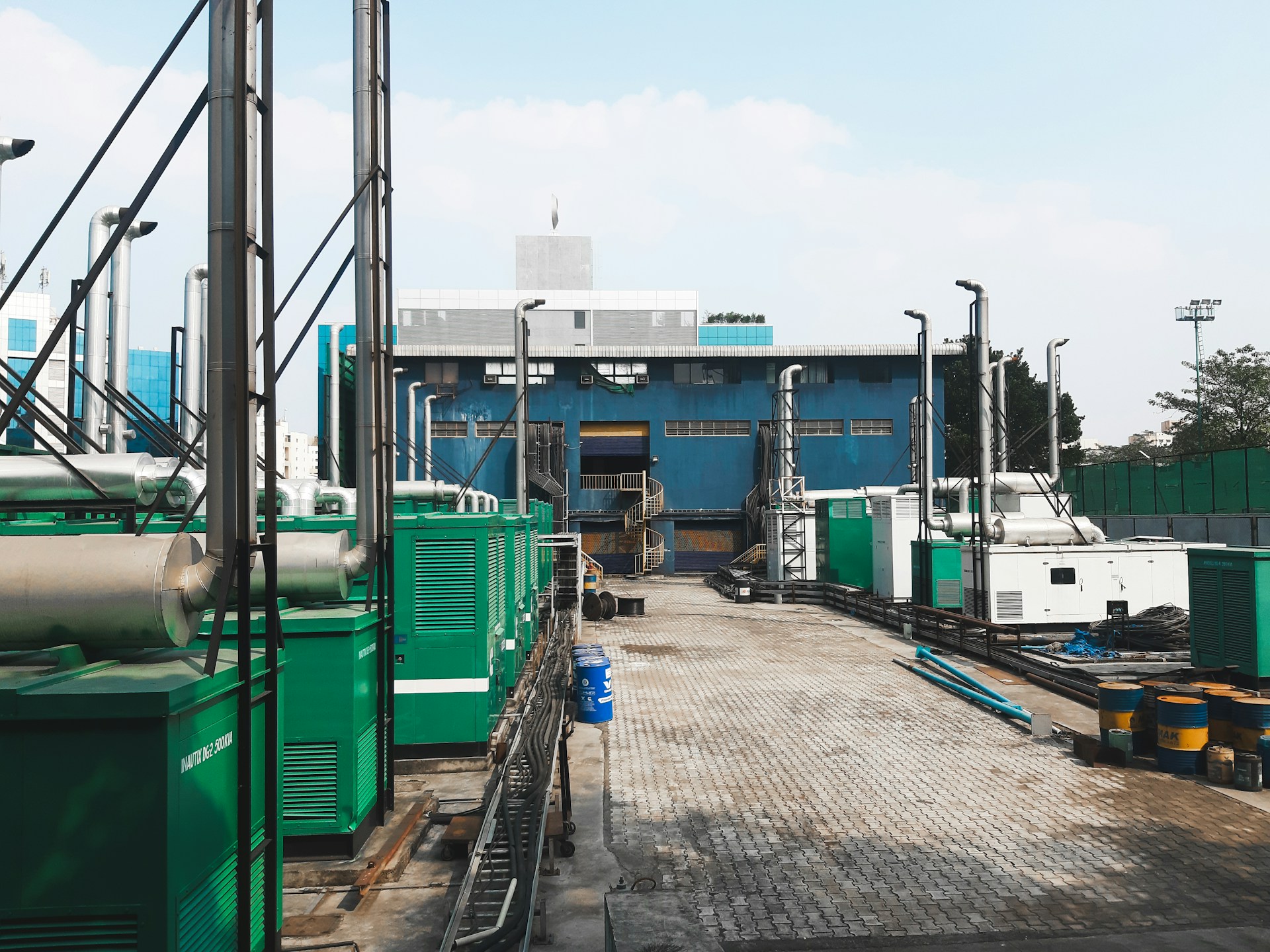GENERATORS
A generator is a device that produces electrical energy.

Information About Generators
Typically, machines like dynamos that convert mechanical energy into electrical energy are considered generators, but the term is more commonly used for machines that generate electrical energy through internal combustion engines. These types of generators are also called gensets. In practice, generators driven by internal combustion engines running on gasoline or diesel are predominantly used. The mechanical energy provided by the engine is converted into alternating current by an alternator. If a dynamo is connected to the engine, direct current is produced. Small generators up to 5 kW can meet the electrical needs of small businesses or homes. Much larger generators (up to 2,000 kW) are used for large industrial facilities or to supply city grids. Generators are generally used to meet the energy needs of lighting or industrial facilities and to provide grid voltage.
Air Cleaner: A device that filters incoming combustion air before it reaches the combustion chamber. It is a crucial factor affecting the lifespan of a diesel engine.
Air-Cooled Engine: A cooling method where air moved by a fan or a propeller attached to moving parts of the engine flows over the heated parts of the engine to cool them.
Alternating Current (AC): Most homes and businesses use alternating current. AC is defined as a current that changes direction regularly, having both positive and negative values. The frequency of this direction change is fixed per second, used at 60 Hertz in the USA and 50 Hz in Europe.
Alternator: A device that converts mechanical energy into alternating current electrical energy. It can also be referred to as an AC or synchronous (brush or brushless) generator.
Ammeter: A measuring instrument used to measure the strength of current (Amperes).
Automatic Transfer Switch (ATS): A switch designed to transfer the load to a different power source upon detecting a power outage. It is important to note that such circuits should always be installed by qualified electricians to prevent backfeed conditions that could lead to fatal accidents or equipment failures.
Auxiliary Fuel Pump: A pump that transfers fuel from remote fuel tanks to the engine.
Continuous Power: The power recommended by the manufacturer for continuous operation under specified conditions, defined as always operating at a constant and unchanging load. Most high-quality industrial generators are designed to deliver continuous output at specified levels.
Decibel (dB): One-tenth of a bell sound. It is a sound measurement system where 0 dB is the baseline for the lowest sound level we can hear, and the maximum sound level the human ear can tolerate is determined to be 140 dB.
Delta Connection: The method of connecting the phases of three-phase generators in a triangular shape. When two phases are used to obtain 120/240 V from three-phase systems, the power drops to one-third. The product description section provides a list showing single-phase kW rates to help customers determine their energy consumption.
Four-Stroke Engine: An internal combustion engine that requires four separate movements to complete one power cycle (intake, compression, power, and exhaust).
Frequency: The number of oscillations in a specified time unit in alternating voltage or current. The oscillations per second are called Hertz (Hz).
Fuel Injector: A system that injects a measured amount of fuel into the combustion chamber.
Governor, Electrical: A system that detects the engine speed using a magnetic sensor or by monitoring the frequency at the generator output and supplies the appropriate amount of fuel to the combustion chambers via an electrical control system to maintain the necessary speed.
Hertz (Hz): A unit of frequency or oscillation per second. The standard frequency system used in the USA is 60 Hz, while 50 Hz is used in European countries. GENPOVER manufactures generators at 50 Hz / 60 Hz or custom frequencies per customer request.
Injection Pump: A device that measures and sends fuel under pressure to the injector or injector nozzle.
Kilowatt (kW): The actual electrical power value of 1000 Watts.
Liquid-Cooled Engine: An engine type cooled by a liquid coolant circulating through the heated parts of the engine. The coolant goes from the engine to a radiator or heat exchanger system, cools down, and returns to the engine to repeat the process.
Oil-Cooled Engines: In these types of engines, the lubricating oil also cools the heated parts. The heated oil goes to a radiator cooled by the engine fan, cools down, and returns to the engine. Oil cooling has several advantages. Oil boils at 392°F (200°C) and gels at -40°F (-40°C) without expanding in volume. Oil does not oxidize and does not cause rust inside the engine. Oil efficiently maintains fluidity and heat transfer up to 178°C and reduces noise levels.
PTO-Driven Generator: A generator designed to be driven by the power take-off shaft of a tractor. Any two-bearing generator can be adapted to be driven by a power take-off shaft or pulley/belt.
Standby Power: The power source selected to generate electrical energy when the primary power provider fails. The kW outputs of generators selected for standby power applications are higher than those for continuous applications.
Voltage Regulator: A device that automatically maintains the voltage obtained from the generator at desired values within the system or outside.
Wye Connection: The method of connecting the phases of a three-phase generator in a Y shape. One end of each phase is connected to each other, and the other ends are connected to the appropriate lines for consumption.